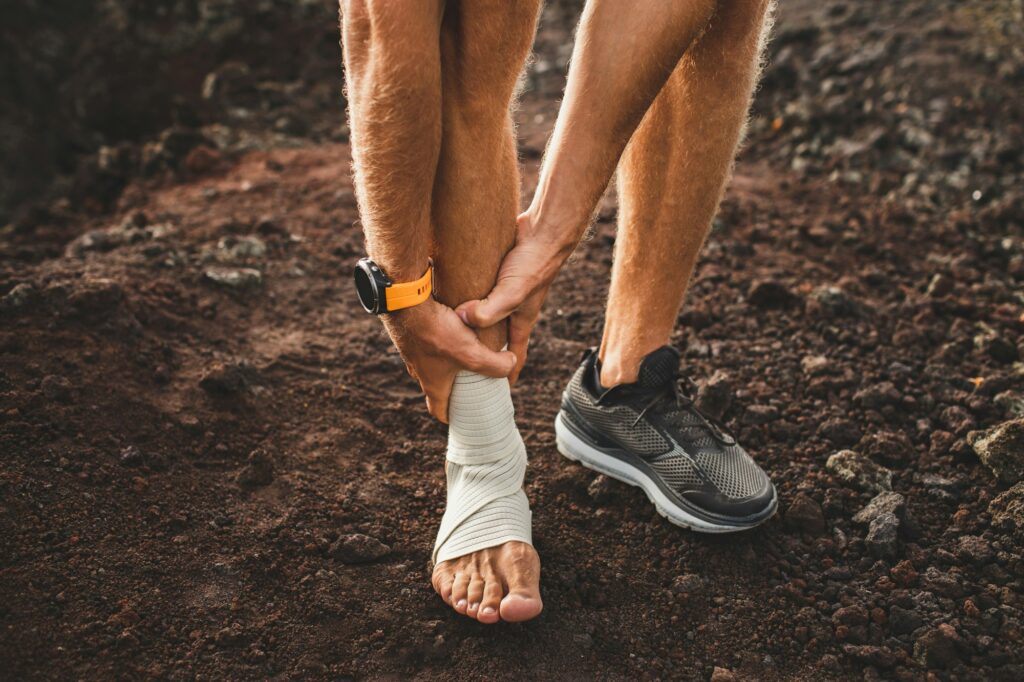The pictures we use in our articles might not show exactly what the words say. We choose these pictures to make you interested in reading more. The pictures work together with the words but don’t take their place. The words still tell you the important facts.
Are you curious about the hidden wonders within your body? Today, we're diving into the fascinating world of ligaments - the unsung heroes that keep your joints stable and your body moving smoothly. Whether you're a fitness enthusiast, a healthcare professional, or simply someone who loves learning about the human body, this blog post will unveil 10 captivating facts about ligaments that will leave you in awe. Let's embark on this journey of discovery together!
1. The Body’s Natural Glue
Ligaments are often described as the body's strong glue. These remarkable structures hold our bones together and keep our joints stable. Made primarily of collagen, a tough and flexible protein, ligaments possess the strength and resilience needed to withstand tension and stress. They're like the silent guardians of our skeletal system, working tirelessly to maintain our body's structure.
2. A Vast Network of Support
Did you know that there are over 900 ligaments distributed throughout your body? That's right - these fibrous wonders form an intricate network that spans from head to toe. From the ligaments in your spine that help you stand tall to the tiny ones in your fingers that allow you to grip objects, each one plays a crucial role in your daily movements.

3. The Knee’s Powerhouse
When it comes to strength, the ligaments in your knee take the crown. The Anterior Cruciate Ligament (ACL) and Posterior Cruciate Ligament (PCL) are among the strongest ligaments in the entire body. These powerhouses work together to stabilize your knee joint, allowing you to walk, run, and jump with confidence.
4. Ligaments vs. Tendons: The Great Divide
While ligaments and tendons are both connective tissues, they serve different purposes:
- Ligaments connect bones to other bones, providing stability to joints
- Tendons connect muscles to bones, facilitating movement
Understanding this distinction is crucial for appreciating the unique role ligaments play in our body's architecture.
5. The Healing Challenge
Unlike muscles, ligaments have a limited blood supply, which makes them challenging to heal when injured. This is why ligament injuries often require more time and care to recover fully. However, don't lose hope! With proper treatment and rehabilitation, ligaments can heal and regain their strength.
6. Ligaments: The Joint Guardians
One of the primary functions of ligaments is to prevent joint dislocation. They act as natural restraints, keeping your bones aligned and limiting excessive movement that could lead to injury. Without these guardians, our joints would be unstable and prone to dislocation, significantly impacting our ability to perform daily activities.
7. The Stretchy Debate
Can ligaments be stretched? This question often sparks debate among fitness enthusiasts and healthcare professionals. While ligaments do have some elasticity, excessive stretching can lead to laxity and instability. It's essential to maintain a balance between flexibility and stability when it comes to ligament health.
8. The Injury Spectrum
Ligament injuries can range from mild sprains to complete tears. Understanding the severity of an injury is crucial for proper treatment:
- Mild sprain: Slight stretching of the ligament
- Moderate sprain: Partial tearing of the ligament fibers
- Severe sprain or tear: Complete rupture of the ligament
Each level of injury requires a different approach to treatment and rehabilitation.
9. The Power of Regeneration
While ligaments have a limited capacity for self-repair, they possess a remarkable ability to regenerate to some extent. This natural healing process, combined with proper care and rehabilitation, offers hope for recovery from ligament injuries. It's a testament to the body's incredible ability to heal and adapt.
10. Ligaments and Long-Term Health
Taking care of your ligaments is crucial for long-term joint health and overall well-being. Untreated or inadequately managed ligament injuries can lead to chronic pain, joint instability, and increased susceptibility to future injuries. By understanding the importance of ligament health, you can take proactive steps to protect these vital structures.
Keeping Your Ligaments Healthy: Tips and Tricks
Now that we've explored these fascinating facts about ligaments, you might be wondering how to keep these important structures healthy. Here are some tips to maintain strong and resilient ligaments:
- Stay active: Regular exercise helps strengthen the muscles around your joints, providing additional support to your ligaments.
- Warm up properly: Always warm up before physical activity to prepare your ligaments for the stress of exercise.
- Practice good form: Whether you're lifting weights or playing sports, using proper technique can help prevent ligament injuries.
- Maintain a healthy diet: A balanced diet rich in vitamins and minerals supports ligament health and overall joint function.
- Listen to your body: If you experience pain or discomfort, don't push through it. Give your body time to rest and recover.
By incorporating these habits into your daily routine, you can help ensure that your ligaments stay strong and healthy for years to come.
FAQs About Ligaments
Q: Can ligaments heal on their own?
A: Yes, ligaments have the ability to self-heal. However, the process can be slow and may require rest, rehabilitation, and medical intervention depending on the severity of the injury.
Q: How long does it take for a ligament to heal?
A: Healing time varies depending on the severity of the injury and the specific ligament affected. Minor sprains may heal in a few weeks, while more severe injuries can take several months or even require surgery.
Q: Can ligament injuries be prevented?
A: While some injuries are unavoidable, you can reduce your risk by warming up before activities, using protective equipment, maintaining a healthy lifestyle, and practicing proper form during physical activities.
Q: Are there any diseases that affect ligaments?
A: Yes, certain conditions like rheumatoid arthritis and lupus can trigger inflammation and damage to ligaments, affecting joint function and causing chronic pain.
Q: Can ligaments be replaced?
A: In cases of severe ligament injuries, surgical repair using techniques like donor ligaments, grafts, or synthetic materials may be necessary to reconstruct the damaged ligament.
Conclusion: Appreciating the Unsung Heroes
As we conclude our exploration of ligaments, it's clear that these often-overlooked structures play a vital role in our daily lives. From providing joint stability to enabling our movements, ligaments are truly the unsung heroes of our musculoskeletal system. By understanding and appreciating these remarkable tissues, we can take better care of our bodies and maintain our mobility and strength for years to come.
Remember, whether you're an athlete pushing your limits or someone simply going about your daily routine, your ligaments are working tirelessly to support you. By giving them the care and attention they deserve, you're investing in your long-term health and well-being.
So the next time you take a step, reach for an object, or engage in your favorite physical activity, take a moment to appreciate the incredible network of ligaments that make it all possible. These fascinating structures are a testament to the marvels of the human body, deserving of our admiration and respect.

